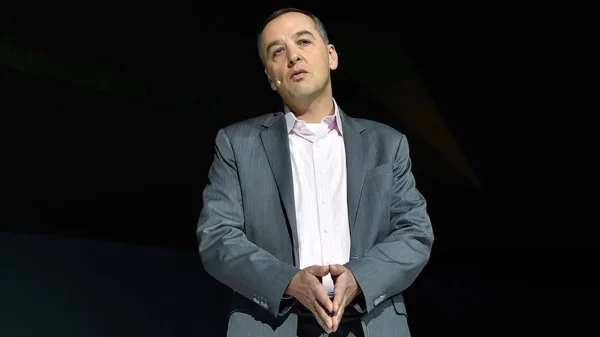The miniseries “Station Eleven,” produced by Paramount Television Studios and created by Patrick Somerville, offers a unique and refreshing take on the apocalypse, focusing on themes of solidarity, beauty, and kindness as opposed to violence and cruelty. Based on Emily St. John Mandel’s novel, the show explores the aftermath of a civilization’s collapse and the emergence of a new society through the eyes of doctors, artists, and survivors of a devastating flu pandemic.
The central story revolves around the Traveling Symphony, a wandering theater troupe that brings music and Shakespeare to post-apocalyptic communities. The narrative follows Kirsten Raymonde, a stage actress who, after her parents and mentor die from the flu, joins a group of survivors, including Jeevan Chaudhary and his brother Frank. Eventually, Kirsten becomes a performer with the Traveling Symphony. Tyler Leander, Arthur’s son, and The Prophet, a man who leads a commune of children born after the pandemic, are also central characters.

Himesh Patel in Station Eleven (Via IMDB)
A primary theme in “Station Eleven” is the resilience and power of art. The series delves into art’s ability to bring people together, act as a reflection of complex emotions, and create connections through a comic book penned by Arthur’s ex-wife, Miranda Carroll. Titled “Station Eleven,” this sci-fi tale provides comfort and foreshadows the world to come.
The cinematography, visuals, and character development in “Station Eleven” are remarkable, offering an immersive experience with compelling narratives, well-rounded characters, and stunning visuals. Despite the ongoing pandemic, “Station Eleven” began filming months earlier and earned rave reviews and award nominations but struggled to find a broad audience. The series has gained particular relevance in the context of COVID-19, offering a powerful narrative that mirrors collective trauma and provides hope during turbulent times. “Station Eleven” is available for streaming on Max in the U.S.
























